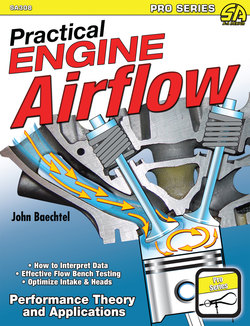Читать книгу Practical Engine Airflow - John Baechtel - Страница 7
На сайте Литреса книга снята с продажи.
ОглавлениеINTRODUCTION
This is a book about airflow through internal combustion (IC) engines, more specifically high-performance and racing engines. All the fundamentals of IC engine operation apply, but the chief concern is with the movement of air through an engine in the most efficient manner to produce optimal cylinder filling (volumetric efficiency) and maximum output in the form of tire-shredding power, or torque. It’s not an engineering text, although engineering content and appropriate lingo are included where necessary along with input and commentary from recognized experts in the field. It’s not a math book, although some mathematical equations are provided so you can learn how to calculate the values of various functions.
It is a book for performance enthusiasts eager to gain a fundamental knowledge of engine airflow and how it affects the operation and output of high-performance engines. My intent is to help build your general knowledge of core principles to help you select components that best suit the requirements of your specific application whether it is a hot street machine, bracket racer, road racer, or whatever.
Without discounting the necessary core physics of IC engines and the fundamentals of gas exchange that characterize engine performance, I begin with the assumption that performance-oriented readers already possess a basic understanding of four-cycle engine operation and the well-established reality that engine airflow is the key path to maximum power.
Airflow through an engine is the key path to power. As illustrated in this cutaway of an earlier 32-valve Corvette LT1 V-8, tuned-length flow paths usher air from the throttle body inlet to the cylinder where it is burned with fuel and discharged via a tuned exhaust system. More air mixed with more fuel equals more power. (Photo Courtesy GM Media Archive)
A small-block hot rod with a single 4-barrel carb, or a small-displacement blower, and a good exhaust system is a great recipe for hot street performance. Beyond that, the bar continues to rise based on the fundamental requirement to put more and more air through the engine to increase output.
Tri-power carburetion featuring a trio of 2-barrel carburetors was a popular early induction choice for moving more air. Most muscle car versions used Holley 2-barrel carbs, but traditional hot rods are typically fed by 350-cfm Rochester carbs with progressive linkage (shown).
